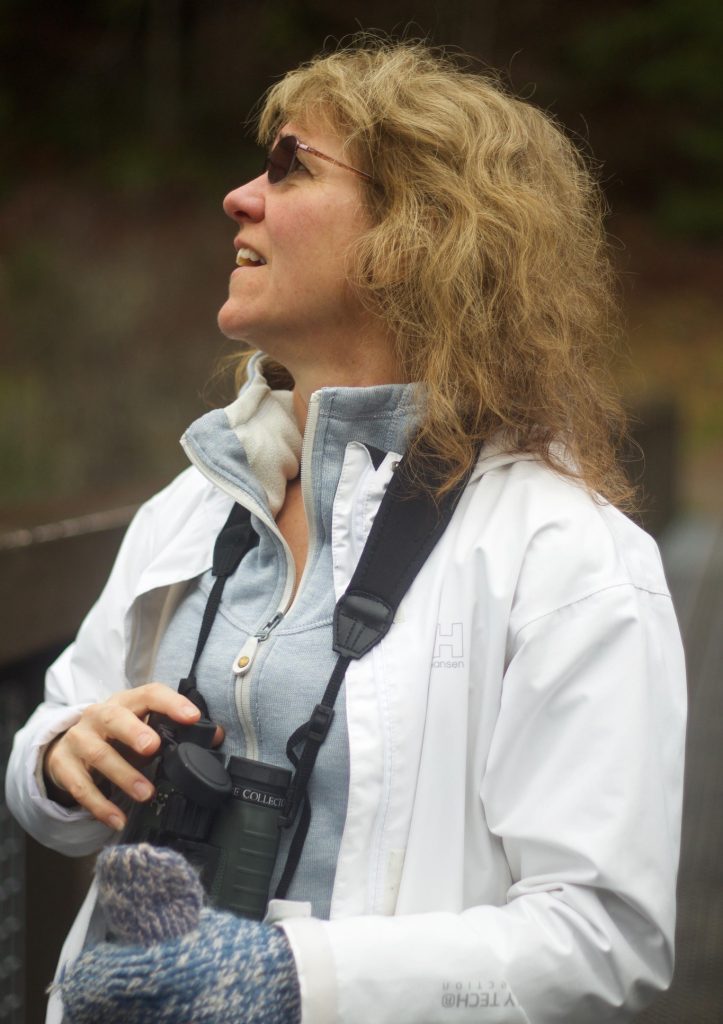
Location:
George Dawson Inn
11705 8th St, Dawson Creek, BC V1G 4N9
We acknowledge that we will be meeting & birding within the traditional territory of the Treaty 8 First Nations, the home of the Cree, Dane-Zaa, Saulteau, Sikanni and Slavey people.
May 30 update: re Dawson Creek area fire situation: “One forest fire well south of town, and well south of the nearest field trip route. No smoke. Evacuated communities are very small with only a few people affected.”
NOTE: 40 rooms (two queen beds) have been set aside at the George Dawson Inn (GDI) at a conference rate of $129 + fees & taxes. This rate includes breakfast. This rate is for two people, there is a small upcharge for any extra people in the room. To book a room, call 250-782-9151 Monday-Friday between 7AM and 3PM and speak to Diana; mention that you are attending the BCFO conference. This block of rooms is available until May 30. There are numerous other hotels/motels in Dawson Creek, the closest to the GDI are the Ramada, the Aurora Park Inn and the Days Inn.
Getting here: drive from Vancouver = ~1200 km; from Kelowna = ~1100 km; from Prince George (PG) = ~400 km
Fly into PG and drive ~400 kms north; fly into Fort St John and drive ~75 km south; fly into Grande Prairie and drive ~130 km northwest
Check rental car rates! some do NOT offer unlimited mileage!
You must be a paid-up BCFO Member for 2025 to register for the Conference: join or renew HERE.
AGM & Conference Registration & Payment page is HERE (to log-in, use your Member password, which you received by email when you joined or renewed) Registration will close May 30. No refunds after this date.
Full conference registration: $195/person.
Social Only $75.00 : includes Friday evening meet & greet, and Saturday dinner & keynote speaker. Does not include field trips, lunches, afternoon presentations or AGM meeting.
Young Birders (under 19 years of age) $90.00: includes Friday evening meet & greet, Saturday & Sunday breakfasts & lunches, Saturday evening dinner & keynote speaker, plus all field trips and talks.
Friday, June 13
Registration, Social and Saturday Field Trip Signup: 5:00 PM until 8:00 PM at the George Dawson Inn, Tremblay Room. Pick up your conference registration package and socialize with fellow birders. There will be appetizers and a cash bar. Sign the conference waiver form (preview the content of the Waiver in advance HERE ) ; review the BCFO Code of Ethics and make your field trip selections for Saturday morning.
Saturday, June 14
Breakfast: For those staying at the GDI, Breakfast will be available at 5:00 AM in the Tremblay Room. The hotel restaurant is open for guests and non-guests, and Tim Horton’s and McDonald’s are across the street. Meet in the parking lot at 5:20 for field trip departure at 5:30 sharp! Snacks & drinks will be available during the field trips to hold people over until lunch.
Conference Field Trips: 5:30 sharp departures from the George Dawson Inn parking area; return ~11:30
Trip #1 = McQueen Slough, Comstock marsh, north of Rolla (access to some sites may be weather/road dependent)
Trip #2 = Swan Lake & Road 201
Trip #3 = Taylor (Big Bam & Johnson Roads)
Trip #4 = Bear Mtn/Radar Lake / Pasture Road (exact route will depend on road conditions)
Trip #5 = Brassey Creek & Arras
Lunch: 12:00 to 1:00 PM in the Tremblay Room .
Afternoon Speakers: (1:00 – 3:00) Amie MacDonald & Kianna Leung (Bird Studies Canada) “Tracking birds and bats in northern BC with the MOTUS wildlife tracking system” followed by Sandra Milligan (North Island College) “Birdbrain?!”
Annual General Meeting: 3:00 PM. Signup sheets for Sunday morning field trips will be available immediately following the AGM.
Social with cash bar: 5:30 – 6:30 PM
Banquet: 6:30 – 7:30 PM
Steve Cannings Award Presentation: 7:30 PM
Keynote Speaker: 7:45. Dr Ken Otter, UNBC – Drivers of Cultural Evolution in White-throated Sparrow Song – Lessons from Citizen Science Initiatives
Sunday, June 15
Morning field trips depart 5:30 am from the George Dawson Inn parking lot
Lunch 12:00 to 1:00 pm
Tally-up of Species on Summary Charts
Farewell
Post-Conference Extension Trip June 15-17: Details HERE.
Field Trips
For ALL field trips – check weather forecast and dress appropriately. If rain is recent or expected, waterproof boots will be helpful. Mosquitoes may be present in vicious blood-thirsty clouds, completely absent, or somewhere in between depending on seasonal moisture. Temperatures could range from near freezing to +30. Welcome to the Boreal Forest!

#1) McQueen Slough, Comstock/Lakeview, north of Rolla (some sites depending on road conditions) – McQueen’s Slough is approximately 15 minutes drive from the hotel. Walking is on flat terrain ‘out and back’ on local trails (1.5 km max). Brief demo and explanation of the onsite MOTUS tower by Birds Canada staff prior to departing McQueen Slough. Comstock/Lakeview is viewed from an elevated distance / parking area (roads permitting; no walking) Spotting scope is recommended. Trip leader will have at least one. Side trip north of Rolla (Doe River area) to search for Upland Sandpiper (roadside). Both wetlands are quite dry due to prolonged drought. Hopefully the water level will have recovered somewhat by June. Probable birds include: Eared & Horned Grebes, Trumpeter Swan, various ducks including Gadwall, B-w Teal, N Shoveler, Pintail, Redhead, Canvasback, Lesser Scaup, Ruddy Duck & others, Harrier, Merlin, Sora, Am Coot, Upland Sandpiper, Wilson’s Snipe, Wilson’s Phalarope, Franklin’s Gull, Black Tern, House Wren, Marsh Wren, Yellow Warbler, Clay-colored Sparrow, Vesper Sparrow, Lincoln’s Sparrow. Swamp Sparrow, White-throated Sparrow, Yellow-headed Blackbird, Common Grackle & more.
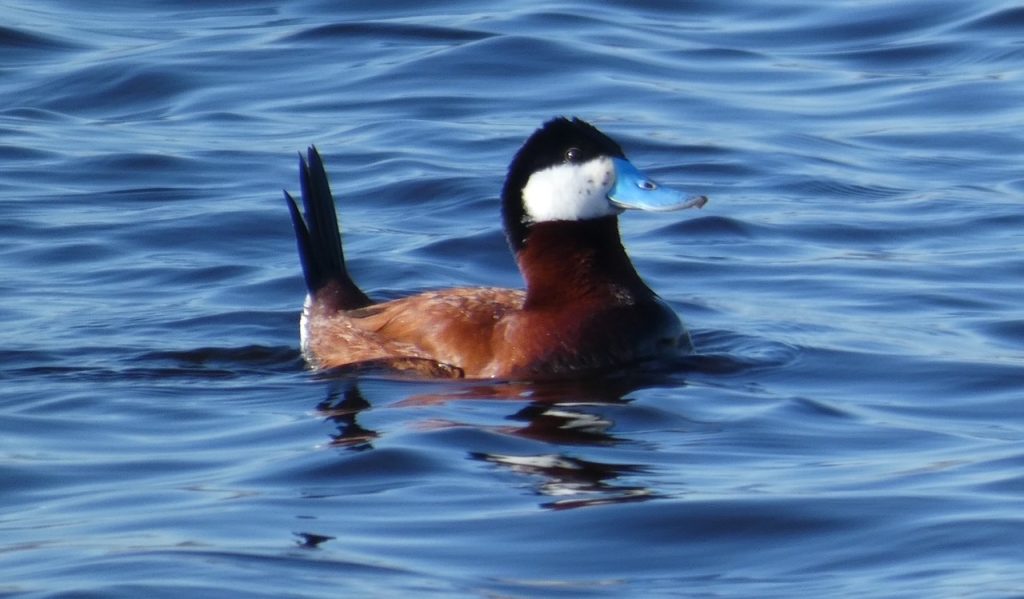
#2) Swan Lake and Road 201 – Swan Lake is approximately 25 minutes drive from the hotel. A scan of the north end of the lake from the boat launch area may turn up some waterbirds; easy walking around the immediate area to find forest birds. Then drive to road 201 and walk a gravelled road for more forest birds. Easy walking as far or as little as desired.. a few hundred metres at most. Scope will be helpful for Swan Lake. Probable birds include: Common Loon, Common Goldeneye, Red-necked Grebe, Bald Eagle, Franklin’s Gull, Bonaparte’s Gull, other oddities on the lake, Yellow-bellied Sapsucker, Alder Flycatcher, Least Flycatcher, Eastern Phoebe, Blue-headed Vireo, Philadelphia Vireo, Tennessee Warbler, Blackpoll Warbler, Black-and-White Warbler, American Redstart, Northern Waterthrush, Mourning Warbler, Canada Warbler, Rose-breasted Grosbeak, Lincoln’s Sparrow, White-throated Sparrow, Fox Sparrow (red), Baltimore Oriole.
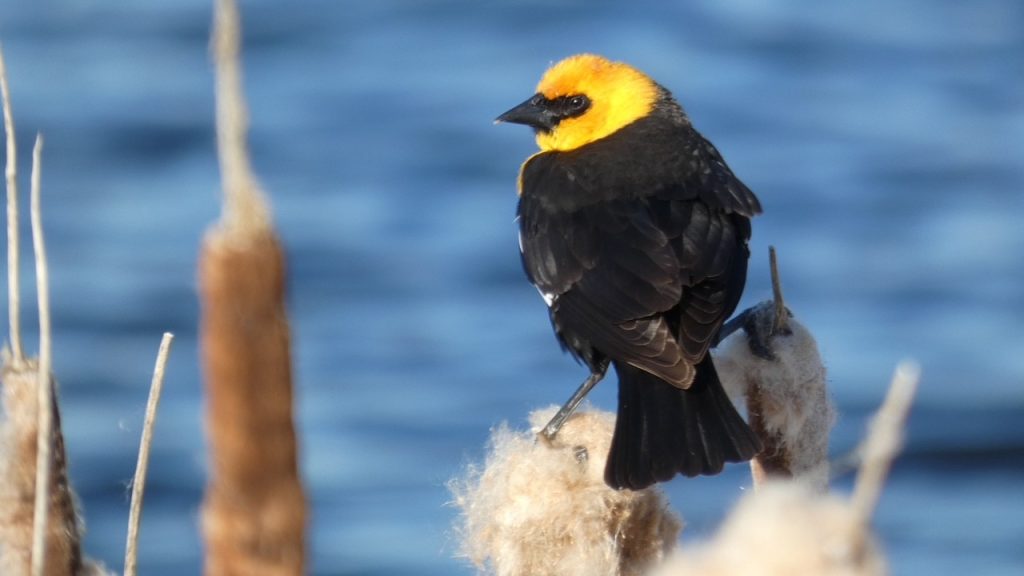
#3) Taylor (Big Bam & Johnson Roads) – The south Taylor hill parking lot is approximately 30 minute drive from the hotel. This will be a driving trip with periodic stops at birdy locations in river-bottom forest. Pre-conference scouting will search for Sharp-tailed Grouse, Upland Sandpiper and Ruby-throated Hummingbird; If the birds are present, additional (roadside) stops will be added. Other probable birds include: Ruffed Grouse, Calliope Hummingbird, Yellow-bellied Sapsucker, Pileated Woodpecker, Least Flycatcher, Eastern Phoebe, Red-eyed Vireo, Swainson’s Thrush, Black-throated Green Warbler, Black-and-White Warbler, American Redstart, Ovenbird, Northern Waterthrush, Canada Warbler, Lincoln’s Sparrow, White-throated Sparrow, Purple Finch.
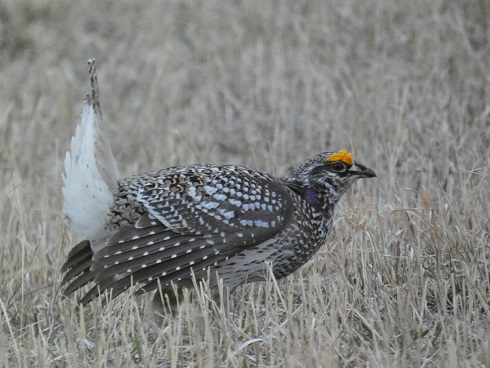
#4) Bear Mountain / Radar Lake, Pasture Road – exact route will depend on current road conditions; approximately 15-20 minute drive from the hotel. Mostly roadside birding in aspen and mixedwood forest; possibly some more open habitats – maybe some very short walking distances. Moisture level will determine whether or not some species are likely to be found. Probable species include: Horned Grebe, Lesser Scaup, Ruddy Duck, Sora, Ruffed Grouse, Solitary Sandpiper, Wilson’s Snipe, Yellow-bellied Sapsucker, Alder Flycatcher, Least Flycatcher, Blue-headed Vireo, Canada Jay, Red-breasted Nuthatch, Hermit Thrush, Cedar Waxwing, Tennessee Warbler, Black-throated Green Warbler, Blackpoll Warbler, American Redstart, Northern Waterthrush, Mourning Warbler, Rose-breasted Grosbeak, Clay-colored Sparrow, Lincoln’s Sparrow, Swamp Sparrow, White-throated Sparrow, Brewer’s Blackbird, Purple Finch. A VERY close-up view of the Bear Mtn Wind Farm (the first in BC) is possible depending on road conditions and priorities!
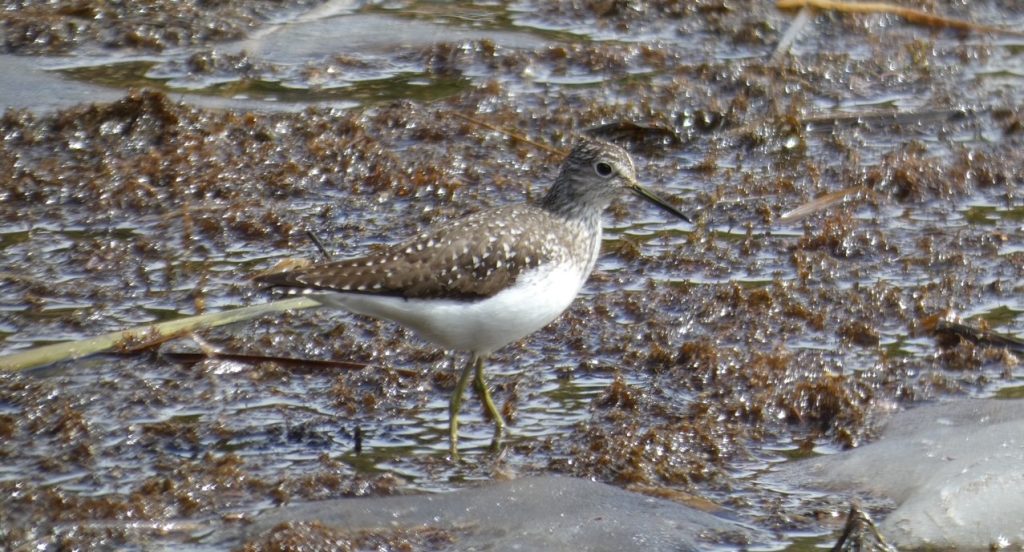
#5) Brassey Creek & Arras – The famed Brassey Creek area isn’t what it used to be (bird-wise), but still holds a good variety of NE BC birds. This will be a driving trip with roadside stops. Short forays into the forest (<50m) may be required to see some species. Forest type will be aspen and mixed spruce aspen & pine-aspen forest & alder & willow brush. This trip includes a stop at the trip leader’s yard and bird feeder setup on our way back to town. Probable (and possible) birds include: Ruffed Grouse, Wilson’s Snipe, Yellow-bellied Sapsucker, Yellow-bellied Flycatcher, Least Flycatcher, Blue-headed Vireo, Philadelphia Vireo, White-breasted Nuthatch, Winter Wren, Tennessee Warbler, Magnolia Warbler, Black-throated Green Warbler, Blackpoll Warbler, American Redstart, Ovenbird, Mourning Warbler, Connecticut Warbler, Canada Warbler, Rose-breasted Grosbeak, Lincoln’s Sparrow, White-throated Sparrow, Common Grackle, Purple Finch, Evening Grosbeak.
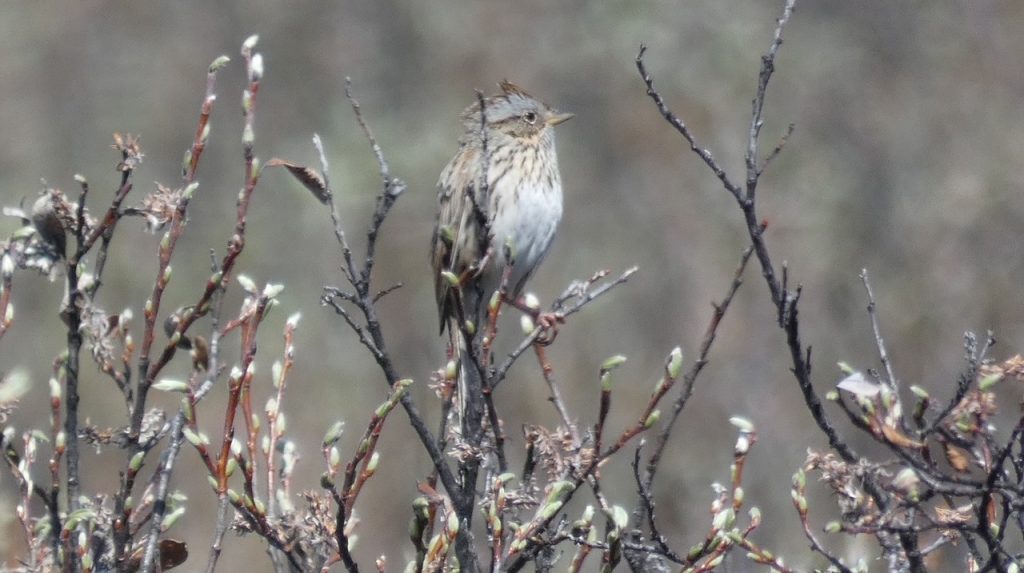
Field Trip Leaders
Al Mottishaw – member of the Timberline Trail and Nature Club and regional Board Member of the BC Hydro Fish & Wildlife Compensation Program (Peace Region). Al has only been birding for a few years but has quickly become familiar with most of the local species, and as a long-time resident of Dawson Creek, he knows the people and the area very well.
Inge-Jean Hansen OR Brian Paterson (tbd) Local wildlife biologists with lots of bird experience .. more detail depending on who can do it!
Joan Kerr & Jeanne Smith – Both are experienced birders, BC Bird Atlas participants and Christmas Bird Count participants from Beaverlodge, Alberta. Joan travels extensively in northeast BC every year to increase her annual bird list!
Andrew Tyrrell – Professional Forester and experienced birder based in Fort St John, Andrew has previously led birding field trips.
Mark Phinney – Wildlife biologist and BCFO director, based in Arras. Experienced birder with considerable experience in leading birding trips.
Speakers & Presentation Summaries
Dr. Ken Otter completed a BSc in Zoology at UBC in 1990, then worked at the Vancouver Aquarium for 1.5 years as a Naturalist before returning to do a MSc and PhD in avian behavioural ecology (mainly on communication and mating strategies in chickadees) at Queen’s University between 1991-1996. After a year of teaching in the US (Kansas), he was offered an NSERC Postdoctoral Fellowship to continue working on communication and mating tactics at the Universities of Nottingham and Copenhagen, which is what he was working on before being offered the faculty position at UNBC in 1999. He has been at UNBC ever since, and his research has largely focused on the impact of anthropogenic disturbance in various forms on bird communication, behaviour and movement. This has ranged from using chickadees as a subject group to study the impacts of forest harvesting and urbanization on forest birds, so assessing the impact of wind development on bird migration. Somewhere in the middle of all of this, we noticed that the white-throated sparrows in central BC were singing a song variant that we had never heard before, and it led to a 25-year sideline project of tracking the cultural evolution of white-throated sparrow song across North America.
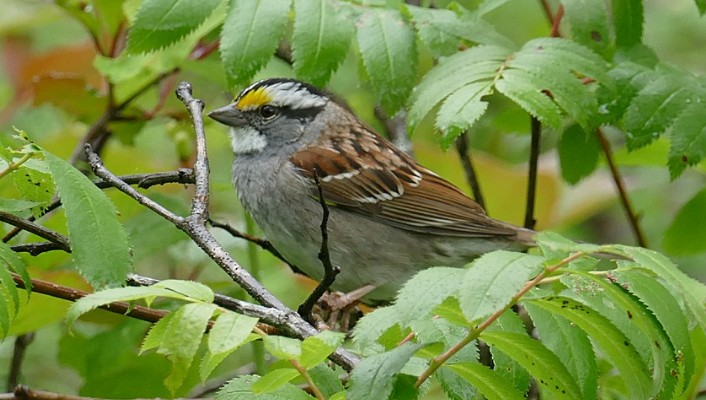
Presentation: Drivers of Cultural Evolution in White-throated Sparrow Song – lessons from citizen-science initiatives: Starting over 25 years ago, my colleagues and I began tracking the emergence and spread of novel song variants in the white-throated sparrow. However, our understanding of how broadly and quickly song can spread between far-flung populations only started to emerge in the past decade with the proliferation of citizen science sound databases and other continental-scale ornithological initiatives. As people began to share their local recordings to sound libraries, it created a database equivalent to the effort of thousands of field assistants contributing recordings at a continental scale. Coupling this with advancements in tracking technology, such as Geolocators and MOTUS networks, we have been able to identify the emergence and patterns of spread of new song variants, and link these to birds learning these songs from tutors during periods of the year when populations overlap. I will be sharing how these new approaches to ornithology have helped us decipher cultural evolution of song in white-throated sparrows, but also where emerging technologies they might take us from here.
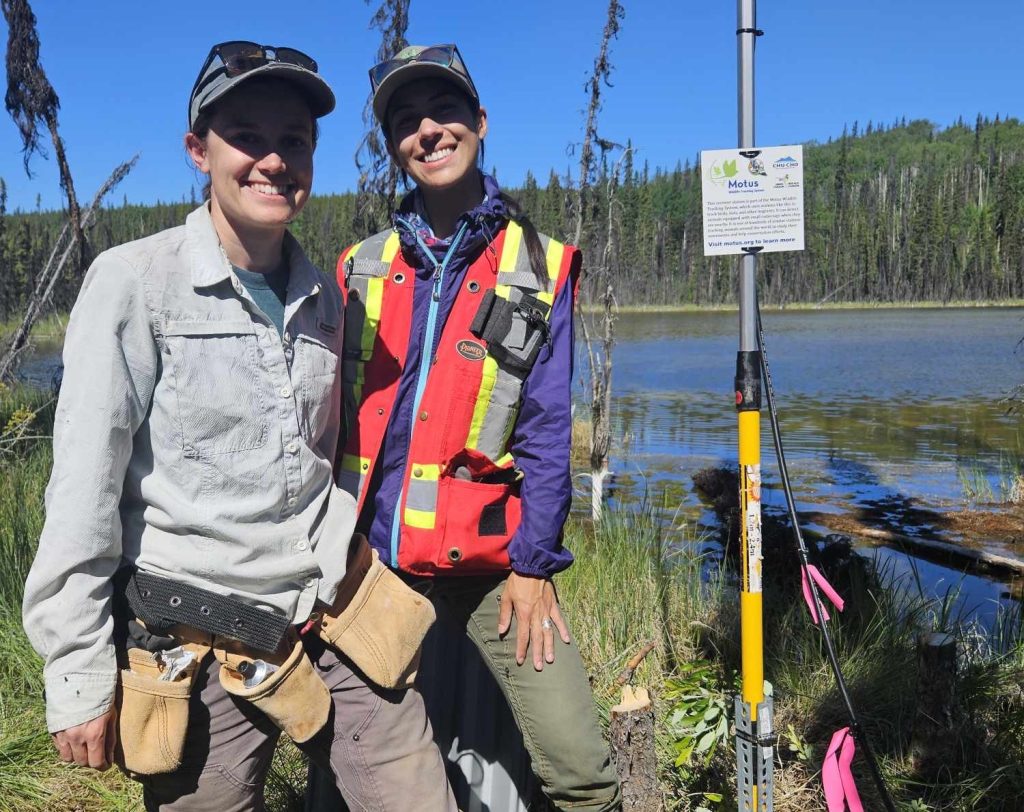
Amie MacDonald & Kianna Leung: Amie MacDonald is the British Columbia Motus Coordinator with Birds Canada. She is working to support the development of the Motus Wildlife Tracking System, and to help researchers and conservationists successfully use Motus across the province. She also works on projects studying population demography of endangered red knots and movement ecology of shorebirds in the Fraser River Estuary. Kianna Leung is the British Columbia Motus Technician with Birds Canada. Since 2022, she has worked alongside Amie to help further expand the Motus Wildlife Tracking System in Western Canada and has assisted with the development and implementation of Motus-based research and conservation projects across northern BC.
Presentation: Tracking birds and bats in northern British Columbia and beyond with the Motus Wildlife Tracking System: The Motus Wildlife Tracking System is an international collaborative research network that uses automated radio telemetry to track birds, bats, and insects. Since 2021, collaborating organizations and individuals have established a network of over 20 Motus receiver stations in northeastern and northcentral BC, and we have used Motus to track the migration routes of white-throated sparrows and bank swallows, gaining insights into the ecology of these birds breeding in the region. Collaborators have also begun to track the local movements of bats, and birds tagged as far away as Costa Rica by independent Motus projects have been detected on Motus stations in northern BC. Motus continues to grow worldwide and in northern BC – we are beginning a new initiative using Motus to monitor bank swallows’ use of wetlands as foraging and roosting habitat during the breeding season, and we aim to continue supporting researchers and projects using the Motus array in northern BC.
Sandra Milligan has been a university biology instructor at North Island College in Campbell River for over two decades. With graduate degrees in Neuroscience, she has evolved into a generalist, naturalist, and lifelong learner. As an environmental advocate and educator, Sandra has been honored with the Local Environmental Hero Award, the Canada 150 Land Trust Honour Roll, and the Campbell River Stewardship Special Recognition award. She delights in sharing her passion for the natural world with the public, regularly hosting Public Walks and Talks on a variety of topics such as intertidal tours, heart dissections, plant reproduction, and making birding more accessible. Recently, her interests have focused on bird behavior and language. Sandra’s exploration of new neuroscience research reveals the remarkable complexity and intelligence of “bird brains ” confirming what many of us have long suspected: that birds are smart, caring problem-solvers that rival the highest primates with their abilities.
Presentation: “BirdBrain“: Discover the fascinating journey of how the term “bird brain” evolved from an insult to a testament of remarkable intelligence, revealing the surprising cognitive prowess of our feathered friends. Sandra will delve into the history of our understanding of avian neuroanatomy, illustrating the shift from viewing birds as mere automatons to recognizing their diverse forms of intelligence. Focusing on Corvids, she will share captivating videos and stories that highlight the remarkable evolutionary journey of these intelligent creatures, inviting us to celebrate their extraordinary abilities. The aim of this talk is to inspire us all to observe birds more closely, try to understand their language, and perhaps even engage in a conversation –but be careful what you wish for, they might have some strong opinions about those khaki pants!

